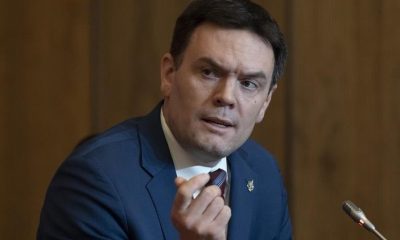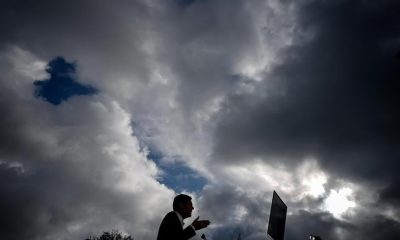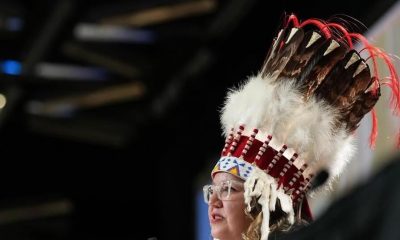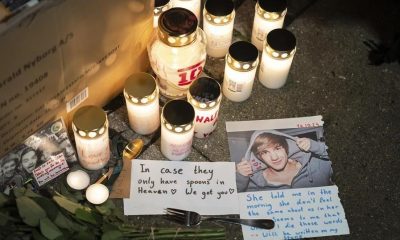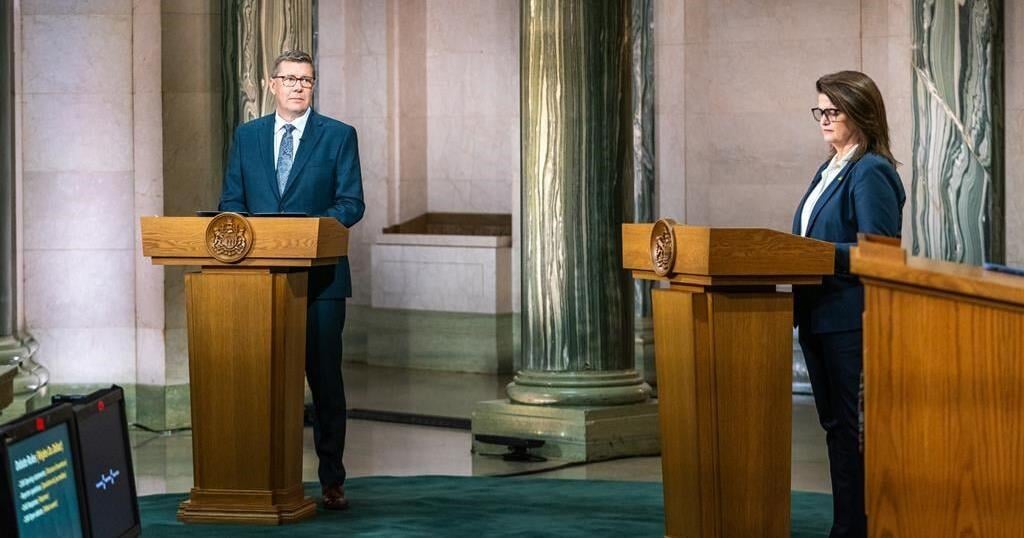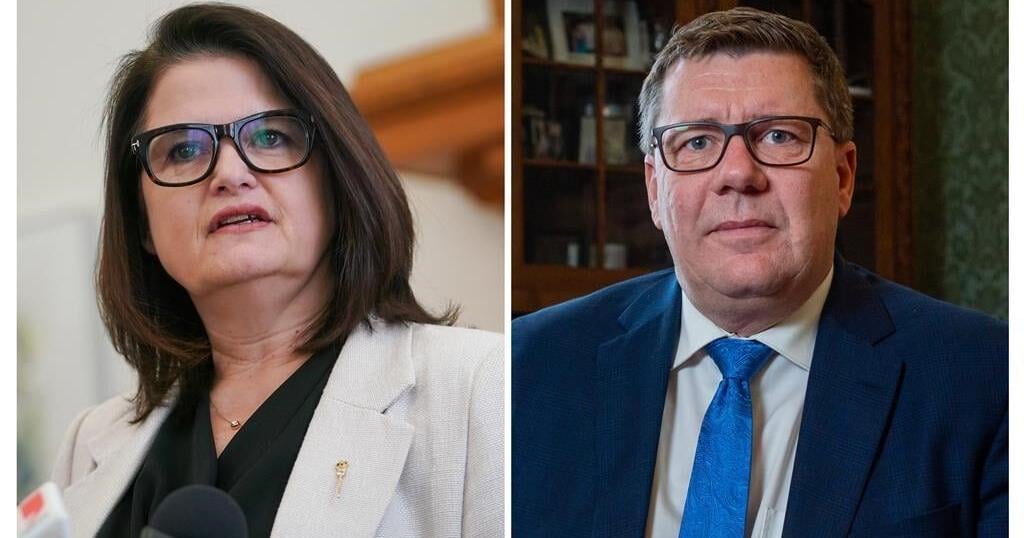By Santosh Paul
Lebanon, was the very epicenter of a rich multi religious and ethnically diverse society in the Middle East. As Edward Said put it, Lebanon was synonymous with “openness, diversity and the joy of life.” This spectacularly beautiful country, is the site of one of the oldest maritime cultures, the Phoenicans. Arabs, Turks, Kurds, Armenians, Europeans, North Africans and Levantines traded and thrived. A diverse religious communities of Maronite Christians, Greek Othodox Christians, Greek Catholics, Shi’ite and Sunni Muslims, the Druze (an offshoot of Shi’ite Islam) and Jews live here.
The Ottoman Turks conquered Lebanon in the 16th century. The syncretic civilization of Lebanon continued to flourish being part of the Ottoman Empire which had strong plural traditions. Lebanon fell to the French after the collapse of the Ottoman Empire in the final throes of the First World War. The age old syncretic culture of Lebanon in due course found its voice in modern Lebanon. The foremost of them was the banker and intellectual Michel Chiha. He visualised the modern Lebanese state as a successor of the ancient merchant state of the Phoenicians. Lebanon represented the ‘heritage of ancient Phoenicia’ and the ‘broader Mediterranean heritage which they had once shared with Greece and Rome’.
In 1946, Lebanon became independent. What kept the peace between the communities was the National Pact of 1943. The Pact of 1943 was a complex arrangement of sharing of power between the various religious groups of Lebanon. Lebanon’s President would be a Maronite Christian, the premier a Sunni Muslim, the Speaker of the house would be a Shiite Muslim. What happened at the top was followed down the line ‘to the lowliest post in civil service’. Since Christians were marginally a majority, they were given a slightly higher representation within the chamber of deputies.
By proportional representation, the country sought to contain the sectarian tensions and to transform the remains of Ottoman Empire into a modern democracy. By the Pact of 1943, different communities were incorporated into becoming willing partners to nationhood. Despite its many critics Parliamentary elections went on unhindered from the time of independence right up to 1976. It was this Pact to which Lebanese returned to after the disastrous civil war.
PLURALISTIC LEBANON BECOMES THE ECONOMIC POWERHOUSE
Lebanon, in contrast to the rest of the Arab world took to modernization and western education very early. With peace amongst its religions and literacy levels at 73.5% – the highest in the developing world – Lebanon made a neat head start. With such high educational levels, it provided a highly trained manpower to the world markets. Lebanese working abroad sent foreign exchange remittances which formed the bulwark of the Lebanese economy. Lebanon with its dynamic economy enjoyed high growth rates, a large influx of foreign capital, and steadily rising per capita income. It became the bustling centre of commerce and culture in West Asia.
By the mid seventies, while the rest of the world economies were reeling under the OPEC induced rise in petrol prices, Lebanon’s economy began to peak. Lebanese Banks became the main source for channeling the petro dollar boom. The Lebanese banks were the repositories of the new found Arab wealth. In 1973, the GDP totaled 2.7 billion US $ which was twice its GDP in 1966. In 1974 in a quantum leap, the GDP rose to US$ 3.5 billion. The foreign banks made their way to Lebanon to partake in the wealth created there. It was but natural for the Lebanese Pound to gain ground against the US Dollar.
RISING SECTARIANISM COVERS UP INEQUALITIES NOT ADDRESSED
Behind this prosperity, lay the inequalities of income and wealth in the Lebanese society. A growing Left movement was driving home the point which mainstream politics constantly brushed aside. The problems of inequality were being effectively sidetracked and thwarted by the elites. To deflect the contentious issue of wealth distribution, the elites began resorting to ever increasingly strident denominational politics. Sectarianism in Lebanon in the seventies “was carefully promoted at its different stages by an emerging or an established elite interested in power”.
Sectarianism is a great distracter. The primary reason attributed to the increased sectarianism was because raising sectarian tensions divided the lower orders on communal lines and thereby diffused the demands made by them for greater share in the wealth created. In an essay ‘Lebanon’s Second Republic: ‘Secular Talk, Sectarian Application’, Sami A. Ofeish wrote:
“Thus the privileged elite usually emphasize stability and maintenance of the sectarian balance. In other words, they are interested in controlling the emerging tensions of the popular classes and guaranteeing themselves continuous access to resources. So popular attempts to challenge, modify, or abolish the sectarian system are usually blocked by the exploiting elite for the alleged sake of safeguarding the national interest (al-maslaha al-wataniyya) or national unity (al-wihda al-wataniyya”).
With the fast permeating denominational politics, the truce among religions collapsed in bits and parts under varying circumstances. The sectarianism promoted by the elites helped stem the appeals for more egalitarian socio economic policies. They also set in train the militarization of their respective sectarian cadres. The dominant Maronite Christian elite initiated a well-organized sectarian campaign designed to solidify their sectarian mass base and militarized cadres. Others followed suit.
BLACK SUNDAY AND THE BEGINNING OF CIVIL WAR
But all pent up animosities have an immediate provocation. Sunday, the 13th April 1975 will remain written in blood in the history of Lebanon. Sheik Gemayel Pierre, Christian Militia leader was attending the consecration of a new church. In an exchange of fire between Pierre’s Phalangist militia and unidentified gunmen, resulted in the death of 4 militiamen and his personal bodyguard. The very same morning Palestinian refugees were returning to their camp. Their bus was ambushed by gunmen who shot dead 27 unarmed passengers including women and children.
These two incidents precipitated the violence between the Christians and Muslims. The elites did nothing to nip the emanating violence in the bud. Instead, they further incited the sectarian passions. Beirut exploded into an orgy of violence with the Christian rightist guerillas and the Shi’ite-Druze alliance now in open conflict. With these signals, the religions of Lebanon and their armed militias soon took the field and this spectacular nation went into a civil war.
The fighting had ripped through the city. An imaginary green line ran through the centre of Beirut: the north of the line was under the control of the Christians and the south controlled by an axis of Druze-Muslims-Palestinians. Beirut’s famous hotels, where the rich and famous of the world partied, located close to the Green Line now became the battle ground for the warring factions. The Phoenicia, St. Georges, and Holiday Inn became fiercely contested militia strong holds earning the odium, ‘the battle of the hotels’ .
This strife in the financial capital of the middle east naturally had international ramifications and every major world power had stakes in Lebanon’s power struggle. Within a year, the Palestinian Liberation Organisation (PLO) was also drawn into this conflict. In the summer of 1976, Syria entered Lebanon to prevent a near certain defeat for the Christians. There were repeated Israeli raids and even a UN force was placed in the region. On 17th of July 1981, the Israelis bombed the PLO headquarters in West Beirut. A cease fire sponsored by the US again failed to bring about any rapprochement between the warring sides.
Another tragedy was to unfold on Lebanon, but this time the trigger went off in far away London. On 3rd June 1982, a Palestinian gunman named Hassan Said fired at the Israeli Ambassador Shlomo Argov in London. The assassin was not a member of the Palestinian Liberation Organization (PLO). He belonged to Yasser Arafat’s rival Abu Nidal’s Palestinian National Liberation Movement. But this vital information was concealed by the Israeli Prime Minister Mencham Begin from his cabinet. He ordered the invasion of Lebanon. The fight now escalated into an international conflict with every major power playing their part in this spiraling violence.
The Israeli army reaching Beirut they joined forces with the Phalangists and commenced the encirclement of West Beirut. They began indiscriminately bombing of residential areas of Beirut. The Israeli officers received instructions to attack Beirut’s Muslim quarters. Colonel Eli Geva whose column was to lead the assault on West Beirut asked himself to be relieved of his Brigade command and be exempted. Begin made a personal request to Geva. Geva refused to participate in a modern military war machine to be let loose against a defenseless civilian population.
But the assault on West Beirut commenced nevertheless and is probably one the most brutal episodes of modern warfare. The tanks pounded, crumbling the buildings and killing the ordinary citizens. The agony of the citizenry did not go unnoticed. ‘Soldiers Against Silence’ consisting of Israeli officers demanded an end to the war. The world watched impotently as Yitzhak Rabin ordered the closing of the water taps to the city of Beirut which was followed by relentless bombardment.
After the Israeli invasion, probably the cruelest pogrom in modern history took place which was to have repercussions after more than a quarter century later. On 15th September 1982 Israeli forces surrounded the Palestinian refugee camps of Sabra and Chattila. It was “hermetically sealed”, to use the euphemistic expression of an Israeli general. On the night of September 16, 1982, Israeli military searchlights illuminated the two Palestinian refugee camps and simultaneously they allowed the Lebanese Christian Phalangist forces to enter the camps. Throughout the night flares lit up the sky. Till dawn only gunfire could be heard. By morning as the reporters moved in, they saw over 2300 bullet ridden bodies of Palestinian men, women and children. As if the killing alone was not brutal enough many of the bodies found were mutilated. This massacre was unparalled in human cruelty. These are deaths not mourned by historians writing from the capitals of the West. There are no monuments to kindle memories of this atrocity. There are no Spielberg’s to evoke our outrage. The powers which allowed this cruel drama to be played out are yet to be made accountable for.
ECONOMIC CONSEQUENCES OF SECTARIANISM
As in all conflicts there was an economic price to be paid. The industry in Lebanon is estimated to have sustained direct damage valued at between L£5 and L£7 billion [ L£ means Lebanese Pounds]. Indirect damage to industry, trade and business could be between L£972 million and L£2.23 billion. One-fifth of industry’s fixed capital was lost. L£6.2 billion losses was sustained by the private sector alone. It is a strange irony that the commercial elites who funded the sectarian politics and strife had now to bear the burden.
Foreign banks which came into Lebanon to partake in the flush of petro dollars, were fleeing the beleaguered city. While Lebanese banks were flushed with funds during the petro dollar boom in the early seventies were now finding its deposits depleting.
This civil war witnessed infrastructural damage of monumental scales. Industry and commerce were paralyzed. The civil service was maintained only by deficit financing. The destructive power of the conflict can be visualized when one deals with the figures showing the destruction factories in the suburbs of Beirut, the connecting highways were torn up, close to 40,000 homes were destroyed. About one-fourth of all Beirut’s dwellings and eighty-five percent of all schools south of the city were damaged or destroyed.
The Lebanese Pound which had proudly risen against the dollar during the pre-civil war days was now taking a beating and hyperinflation set in. The period between 1983 to 1987 saw the rapid decline of the Lebanese Pound. Lebanese Pound collapsed against the dollar from 4 to 477 to the US dollar. By 1986 the inflation rate was well over 100 percent. Currency speculation and black marketeering became the principal areas of business activity. The militias began controlling the customs and other revenues gave them increasing control over what was left of the national economy.
From the beginning of the civil war in 1975 to the early 1990s, perhaps as many as 150,000 Lebanese died. About one-quarter of the country’s population fled abroad, and hundreds of thousands were forced to move from one part of Lebanon to another.
LEBANON ENDS THE CIVIL WAR GOING BACK TO THE CONSTITUION OF 1946
The war which commenced in 1975 had run for over decade and half with no discernible victory for either of the sides. The Lebanese were exhausted. The futitlity of the war, the savagery and the inconclusiveness made the various factions of Lebanese to accept peace on any terms. After 14 years of indecisive fighting, on October 22, 1989 most members of the Lebanese Parliament (last elected in 1972) met in Ta’if, Saudi Arabia. The agreement formed the principle of “mutual coexistence” between Lebanon’s different sects and their “proper political representation”. There, they accepted a constitutional arrangement that adjusted the Presidency, Cabinet, the Chamber of Deputies with representation of Christians and Muslims with the latter having a little more representation to match their population. But the irony is that this is how the country more or less ran prior to the civil war of 1975 under the Pact of 1943.
When Lebanon woke up from the civil war, it discovered that it had lost the basis of its prosperity. The civil war years were Lebanon’s lost years. The Arab money no longer needed the Lebanese. The Middle East’s businessmen dispensed with multi-lingual Lebanese middlemen. They had learnt to deal directly with Western banks and corporations. Lebanon was no longer the Arab world’s bazaar. West Asia had developed their own markets in the interregnum. Dubai, Riyad, Muscat, Doha and many other financial centres had bloomed in the interregnum.
THIS HISTORY OF SECTARIAN POLITICS IS NOT TAUGHT IN INDIA
This is a history rarely taught in India or for that matter in the subcontinent. The tragedy of discarding constitutions founded on secular values and soliciting sectarian ideologies, have scarred nations. For those willing, the lessons are closer to home. The prime examples of sectarian politics was visible in Pakistan, Bangladesh and Sri Lanka. Yet, it is hardly ever noticed and never ever studied. Constitutions in these countries came and went with new regimes promising religious utopia, but ended up destroying democratic institutions and snatching away human liberties and destroying the intricate fabric of syncretism.
Edward Said captured the need of the hour in his book ‘The End of the Peace Process’ he wrote:
Instead of getting a wise leadership that stresses education, mass mobilization, and patient organization in the service of a cause, the poor and the desperate are often conned into the magical thinking and quick, bloody solutions that such appalling models provide, wrapped in lying religious claptrap. …..We need to step back from the imaginary thresholds that supposedly separate people from each other into supposedly clashing civilizations and re-examine the labels, reconsider the limited resources available, and decide somehow to share our fates with each other, as in fact cultures mostly have done, despite the bellicose cries and creeds.
REFERENCES
1. Kamal Salibi A House of Many Mansions
2. A History of the 20th Century, Maritin Gilbert; Harper Collins
3. Sowing the Wind; The Mismanagement of the Middle East 1900-1960: John Keay . John Murray Publishers, 2003
4. Holy Lands: Reviving Pluralism in the Middle East by Nicholas Pelham’s; Columbia Global Reports New York 2016
5. Kamal Salibi: “A House of Many Mansions – The History of Lebanon Reconsidered” Published by I.B. Tauris & Co Ltd, 1993,
6. Lebanon’s Second Republic: Secular Talk, Sectarian Application, Arab Studies Quarterly (ASQ), Wntr, 1999 by Sami A. Ofeish.
7. Charles Glass: An Assassin’s Land; London Review of Books, 4 August 2005
8. Nehru talking under the auspices of Indian Conciliation Group on February 4, 1936 as cited in Essays by Jawaharlal Nehru; George Allen & Unwin Ltd. 1936.
9. Barakat, Halim, ed. 1988. Toward a Viable Lebanon. Washington, D.C.: Center for Contemporary Arab Studies; London: Croom Helm.
10. Chamie, Joseph. 1980. “Religious Groups in Lebanon: A Descriptive Investigation.” International Journal of Middle Eastern Studies 2:175-87.
11. Elkhafif, Mahmoud A.T., M. H. Ghandour, and Atif A. Kubursi. 1992. “Explaining the Hyper-Depreciation of the Lebanese Pound.” QSEP Research Report 288. McMaster University, Hamilton, Ontario.
12. Faris, Hani A. 1982. Beyond the Lebanese Civil War: Historical Issues and the Challenges of Reconstruction. Washington, D.C.: Center for Contemporary Arab Studies.
13. Farsoun, Samih K. 1988. “E Pluribus Plura or E Pluribus Unum? Cultural Pluralism and Social Class in Lebanon.” In Halim Barakat, ed., Toward a Viable Lebanon. Washington, D.C.: Center for Contemporary Arab Studies; London: Croom Helm. 99-132.
14. “The Economic and Social Factors in the Lebanese Crisis.” In Saad Eddin Ibrahim and Nicholas S. Hopkins, eds., Arab Society: Social Science Perspectives. Cairo: American University Press. 412-31.
15. Hourani, Albert H. 1988. “Visions of Lebanon.” In Halim Barakat. ed., Toward a Viable Lebanon. Washington, D.C.: Center for Contemporary Arab Studies; London: Croom Helm. 3-14.
16. Khalaf, Samir. 1987. Lebanon’s Predicament. New York: Columbia University Press.
17. Khalidi, Walid. 1979. Conflict and Violence in Lebanon: Confrontation in the Middle East. Harvard Studies in International Affairs 38. Cambridge, Mass.: Center for International Affairs, Harvard University.
18. Khashan, Hilal and M. Palmer. 1983. “The Economic Basis of the Civil Conflict in Lebanon: A Survey of Analysis of Sunnite Muslims.” In Tawfic E. Farah, ed., Political Behavior in the Arab States. Boulder, Colo.: Westview Press. 67-81.
19. Khalaf, Samir. Civil and Uncivil Violence in Lebanon: a History of the Internationalization of Communal Conflict, Arab Studies Quarterly (ASQ), Summer, 2003
20. Love’s Lebanon lost – Beirut, Lebanon before the warNew Statesman, May 30, 1997 by Charles Glass.
21. Living the good life in Beirut US News & World Report, March 9, 1987 by John Barnes
22. Sectarianism And Business Associations In Postwar Lebanon
Arab Studies Quarterly (ASQ), Fall, 2000 by Sami E. Baroudi
23. The Merchant Republic of Lebanon: Rise of an Open Economy. By Carolyn L. Gates. (Oxford: Center for Lebanese Studies, in association with I.B. Tauris Publishers, London and New York, 1998.)
(The writer is senior advocate, Supreme Court)
DISCLAIMER : Views expressed above are the author’s own.




